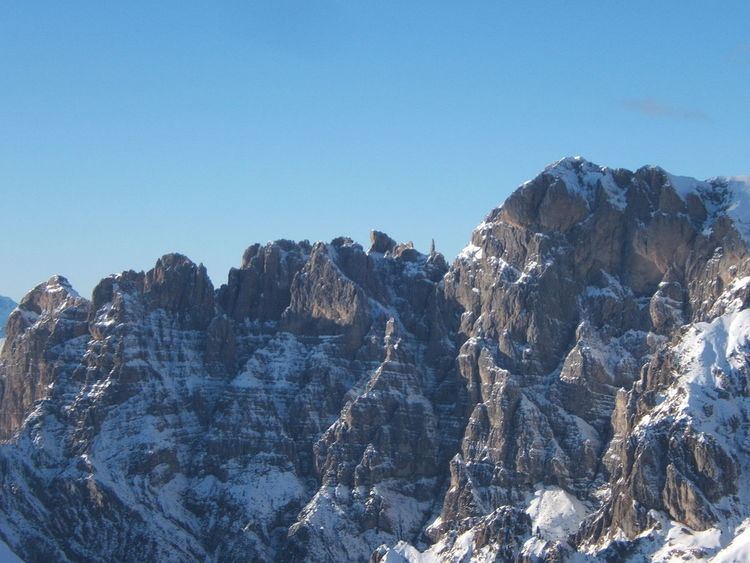Authorized Province Province of Belluno Established 1993 | Designation 1988 Area 32 km² Phone +39 0439 3328 | |
 | ||
Address Dolomiti Bellunesi, Belluno BL, Italy | ||
The Dolomiti Bellunesi National Park (in Italian: Parco nazionale delle Dolomiti Bellunesi) is a national park in the province of Belluno, Veneto, in the northern Italy.
Contents
Established in 1988, the national park is included in the section "Pale di San Martino - San Lucano - Dolomiti Bellunesi - Vette Feltrine" of the Dolomites declared World Heritage Site by UNESCO in 2009.
History
In 1988 was planned to create the Dolomiti Bellunesi national park, that was officially estabilshed in 1990 by the Ministry of the Environment, which identified the aims of the national park:
- to protect the natural, historical, landscape and environmental values, preserving bio-genetic values of the flora, fauna and geomorphology;
- to improve the life conditions of the population;
- to promote the scientific research and environmental education, through the naturalistic culture;
- to safeguard of the agricultural, forest, and breeding activities.
Territory
Dolomiti Bellunesi National Park has an area of 32 square kilometres (12 sq mi), entirely included in the province of Belluno, between the Cismon river and the Piave river, the Maè valley and the Agordo valley.
Mountain ranges
The national park includes mountain rages of Alpi Feltrine (Vette di Feltre, Cimonega, Pizzocco, Brendol, Agnelezze), Monti del Sole, Schiara, Talvena, Prampèr, and Spiz di Mezzodì. There are high-altitude areas, karst rocks, and debris slopes, ideal habitat for high-mountain species.
Rivers and streams
The territory of the national park, except for some high-altitude karst areas, is extremely rich in water resources, like springs, swamps and streams including: Cordevole, Mis, Caorame, Stien (Caorame tributary), Falcina (Mis tributary), Ardo, Vescovà , Prampera (Maè tributary), that improve the biological richness of the Park. Some of these streams flow into deep canyons, and all are subject to variation.
Municipalities
The national park includes 15 municipalities: Belluno, Cesiomaggiore, Feltre, Gosaldo, La Valle Agordina, Longarone, Pedavena, Ponte nelle Alpi, Rivamonte, San Gregorio nelle Alpi, Santa Giustina (Italia), Sedico, Sospirolo, Sovramonte, and Val di Zoldo.
Flora
The flora of Bellunesi Dolomites is composed by rhododendron, Carduus, edelweiss, and other alpine plants. There are broad-leaved tree and pine forests, pastures and alpine meadows.
Fauna
The national park hosts a big alpine biodiversity. Among the most important species are:
